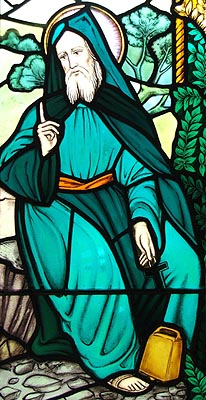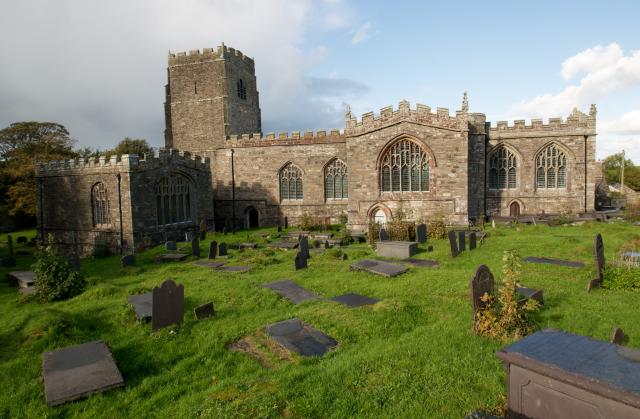Until
the South welcomed more worldliness into her borders these last few decades
than she had heretofore, she had done fairly well at keeping the past in the
present, at remembering: from family
stories and folk tales/wisdom to classical learning. Especially has she been fond of the
Bible. This love has done her much good,
but not as much as it could have.
Lacking the right supports, it has been for most Southrons more of a
manual of proper outward behavior (John Boles, The Great Revival: Beginnings of the Bible Belt, Lexington, Ky.:
Univ. Press of Ky., 1996, p. 193) than of a means to union with God - an idea
Protestant theology will not allow (nor Roman Catholic).
What
she is missing is the presence of holy men and women - saints - who are living
testimonies to the power of God spoken of in the Holy Scriptures to make us new
creations in Christ. These are they who
manifest the Gospel teachings most fully in their lives, who are as it were new
incarnations of Christ in the world, who help us understand the teachings of
the Scriptures by their counsel, for they are full of the Holy Spirit.
Sundered
from the Orthodox Church, wheðer the South remains primarily Protestant or
converts to Catholicism, she will continue to be a dry and barren land for the
cultivation of true holiness, of saints.
She will remain rooted in the rocky soil of religious systems created by mere man: by the Bishop of
Rome in the 11th hundredyear, or Calvin in the 16th, or Campbell in the 19th,
etc. Shorn of good roots, her soul will
continue in its deformed state, unable to keep the fullness of the Church’s
past with her in the present.
However,
she may still choose the better way, the Orthodox way. Then she will see and understand how
important the saints are to our well-being in body and soul, how ever-present
they are with us, how timeless are their teachings, how undying is the Orthodox
Church’s memory of them and gratefulness towards them, how mightily the Holy
Trinity works through them, how wonderful He is in them!
Only
when this time comes, when we know þe fullness of the Grace of God, will the
South’s religious life blossom in all its beauty.
For
an ensample of all this, of how it might yet be here in the South, we offer the life of our Holy Father the Venerable
Beuno, who enlightened many of Dixie’s forebears in southwest England and who
has never ceased to offer his help to those who trust in him as an intercessor
before Almighty God. Halig (Holy) Beuno,
pray to God for us sinners at the South!
A stained glass image
of St. Beuno.
Of the life of Venerable Abbot Beuno, probably the
greatest saint in North Wales, we know very
little. His Life was written many years after his repose, but even the bloody
16th-century Reformation could not erase the memory of this saint of God. Our
holy father Beuno was born in the second half of the 6th century in the Welsh
kingdom of Powys (according to another tradition – in the present-day western
English county of Herefordshire, which at that time was part of Wales) and most
likely was a grandson of a Welsh prince. As a young man, Beuno was taught in
Herefordshire and learned the monastic life in the famous Bangor Monastery that
had been founded by the holy Bishop Deiniol of Bangor
(today the village Bangor-on-Dee in the Borough
of Wrexham in north-east Wales).
In
about 616 Beuno founded his main monastery at Clynnog Fawr in the historic
region and modern county of Gwynedd in northwest Wales. Owing to the tireless labors
of the monks of Clynnog Fawr, most of North Wales
was enlightened with the Gospel. Beuno was ordained priest at Bangor and then was invited to become its
abbot. In all the venerable man established no fewer than nine monastic centers
in Wales
and all of them became famous. According to popular tradition, Beuno was the
uncle, spiritual father and patron of the holy martyr Winifred, whose
veneration throughout the Middle Ages was great. Her relics were in Shrewsbury in England
and her wonder-working well at Holywell in Wales has been a focus for
continual pilgrimages for 1350 years.
St. Beuno's Church in
Clynnog Fawr, Gwynedd.
It
was said of Beuno that he was stern with stubborn sinners but was full of mercy
and compassion for penitents and those who suffered. Towards the end of his
life, Beuno was rewarded by the Lord with the gift of discernment and was able
to penetrate into the depths and mysteries of the spiritual world. Throughout
his life, Beuno worked numerous miracles of healing. He was also a very active
and extremely successful missionary, his preaching of the Word of God reached
many corners of Wales and
south-west England.
Among the contemporary theologians Beuno was famous for his knowledge of the
Holy Scriptures.
The
saint reposed peacefully a few days after Easter Sunday 640 (or 645) in Clynnog
Fawr as a very old man. For most of his very long and fruitful life this holy
man had wandered much, everywhere preaching the words of Eternal Life, founding
monasteries, healing the sick and consoling the destitute, the suffering and those
who had been forsaken by others. Frequently he retired to very secluded places
for solitary prayer. Beuno established monasteries in Llanveynoe in
Herefordshire in England
(the Welsh form: Llanfeuno, “Church
of Beuno”) and in
Llanymynech. To this day there is a unique village called Llanymynech which is
partly situated in Wales
(Powys) and partly in England
(Shropshire). Ancient traditions say that
Beuno, as a wandering preacher, used to pay visits to the monastic islands in Wales at Bardsey and Anglesey.
On Anglesey he may have founded a church, or,
most likely, a monastery, in a place called Aberffraw.
Apparently Beuno for some while led a solitary
ascetic life in Somerset in southwest England where a
tiny and lovely church in Culbone – which stands to this day – served him as a
cell (hence its name: cell = kill = killbeuno = Culbone). This is the smallest
active parish church in all England.
It is dedicated to St. Beuno who has been its patron for many centuries. This
is a fine example (as well as the neighboring early English
Church of St. Dubricius in Porlock) of
an early hidden Celtic shrine in England and indicates the
uninterrupted tradition of holiness. It is believed that it served Beuno as a
cell and after his repose was converted into a chapel. Culbone church is
located in a very quiet and remote place right beside the Bristol
Channel, surrounded by nature, forest, pastures and small farms.
Nearby is the steep Porlock hill and other high hills (typical for Somerset). The views are
breathtaking and as you walk it seems that the sea merges with the sky and
worldly civilization is far away. This is a typical setting for the ancient
Celtic saints.
After
his repose, Beuno was buried in Clynnog Fawr, and soon a chapel was erected
above his grave. A great number of miracles occurred at his holy relics. Later
the saint’s remains were translated to a new church where many miracles
continued to occur. The veneration for Beuno was so strong that it even
continued after the disastrous Reformation under Henry VIII, when all over Britain
monasteries were closed, icons, relics and other holy objects were destroyed
and the veneration of saints was officially prohibited.
Until
the early 19th century there was a custom among the farmers in the vicinity of
Clynnog Fawr to make donations to St. Beuno’s Church in the form of young lambs
and calves on the feast of Whitsun (Trinity Sunday), as well as to lead sick
cattle to the neighboring holy well dedicated to St. Beuno. There are records
of countless cases of healing of sick domestic animals on that holy site. From
the late medieval era, Clynnog Fawr church regularly celebrated a special
service of intercession for the health of livestock. Children who suffered from
many diseases – both before and after the Reformation – were brought and led to
the holy well, bathed in it and left for a night inside the chapel on the grave
or near the grave of the holy man; and many of them were miraculously cured. In
most cases children and young people who had suffered from rickets and epilepsy
left this place absolutely healthy.
There
is written evidence that in the 18th, 19th and 20th centuries people were
healed from many ailments on bathing in this sacred spring. St. Beuno is
considered to be the patron of sick children and sick cattle in Wales to this
day. Beuno’s well at Clynnog Fawr still remains a destination for pilgrimages
today, even though it was partly damaged by vandals in 2010. There is another
holy well dedicated to Beuno in Holywell, Flintshire, situated close to its far
more famous neighbor – the well of Beuno’s niece St. Winifred. From this well
there begins a heritage route devoted to St. Beuno. There is an ancient and now
unused church of St. Beuno and a well associated with him
at the foot of a hill in the village Carnguwch, Gwynedd.
. . .
Source: Dmitry
Lapa, ‘Venerable Beuno, Abbot of Clynnog Fawr in Wales’, http://www.pravoslavie.ru/english/79097.htm,
posted 4 May 2015, accessed 7 May 2015


No comments:
Post a Comment